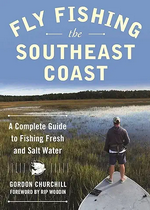| AFTMA No. | Avg Weight in Grains (a) | Range: Mfg Tolerances | Double Taper (DT) | Weight Forward (WF) |
| 2 | 80 | 74-86 | IHI | IHJ |
| 3 | 100 | 94-106 | IGI | IGJ |
| 4 | 120 | 114-126 | HFH | HFG |
| 5 | 140 | 134-146 | HEH | HEG |
| 6 | 160 | 152-168 | HDH | HDG |
| 7 | 185 | 177-193 | HCH | HCF |
| 8 | 210 | 202-218 | GBG | GBF |
| 9 | 240 | 230-250 | GAG | GAF |
| 10 | 280 | 270-290 | G2AG | G2AF |
| 11 | 330 | 318-342 | G3AG | G3AF |
| 12 | 380 | 368-392 | G4AG | G4AF |
| 13 | 430 | 418-442 | – | – |
I would be willing to bet that most fly anglers do NOT have a copy of the Table above. But they should. Those of us who happen to have (still have?) some old fiberglass fly rods know that instead of a numerical line “weight” on the rods, there is a series of letters. In days of yore, those letters (yeah some had numbers, too) told you the line you should get for you rod. Until I found this table, I was at a total loss to know what these letters (some with numbers) were telling me. Confusion is not a good thing. Does this rod take a 4-wt. line or an 8-wt. line? That’s a big difference.
You may be interested to know that fiberglass fly rods are coming back in popularity. But in this day and age, you can’t just walk into Sears or a local gas station to buy one. You have to go find someone who still makes them or find a high-quality fly shop that is aware of the trend. Or, you could go to some yard sales and see if you can find an old one for $5.
There is a world of difference, however, between the new fiberglass fly rods and the old ones. For one thing, the new ones are exquisitely made with custom fittings and a lot of research and testing before, during and after manufacture.
But the uniqueness of fiberglass rods this day and age is in the quality of construction and performance. Find one and you will see how pleasant these new rods are to cast on a small stream. Most, but not all, have a slow action, meaning they bend almost all the way down to the handle. (Medium action bends about half-way down the rod, while fast action bends just beyond the top section- up to 1/3 the length of the rod.) In other words, you can feel far more of the effect of the weighted line on the rod with a fiberglass rod than with most graphite rods. It is the feel that entices those who fish fiberglass rods. Catching a nice fish on a fiberglass rod is a hoot since the rod bends so deeply toward the handle. The trade-off is you can’t cast as well in wind nor chuck a fly into the next county. But, oh, that feel!
Fiberglass is far more durable that graphite. I have a vivid memory of being on the Snake River in the Jackson Hole/Grand Tetons area when, while retrieving a snagged fly for a comrade, the tip of my 6-wt. rod tapped a limb above me – just a gentle tap – and exploded. Apparently, I had hit the tip of the rod one time too many trying to cure my wind knot obsession to the point that the rod was weakened so that gentle tap was just too much and kaboom!
Before you rush out a get one (as with graphite rods, you can find one to fit any pocketbook), try some of the old ones some of us still have from years ago. Some are even old enough for you to need the chart at the beginning of this article to determine what line it needs. So, now you have the chart!
In the past, fiberglass rods were heavier than graphite. Due to new tricks in making fiberglass, that is no longer the case.
Modern fiberglass rods are made either out of E Glass (E for Electrical) or S Glass (S for Structural). The E Glass is alkali free and began a continuous filament used in electrical applications. S Glass has more modulus for higher tensile strength and is used in composites for building and aircraft applications. It is up to 10% stiffer and 30% stronger. E Glass tends to have a slower action but both do well in fly rod construction.
As major rod companies get (back) into the game, they join a host of independent rod builders. Cost for a rod runs anywhere from $25 to $1,200 or more.
Most of the rods built are in the 2-wt to 8-wt range but there are signs heavier weight rods will be available as will longer rods for spey casting.
So, keep your eye out for this resurgence. By all means, see if you can find your old fiberglass rods in the attic somewhere and dust them off for a trip down memory lane AND a view into a bright future.



